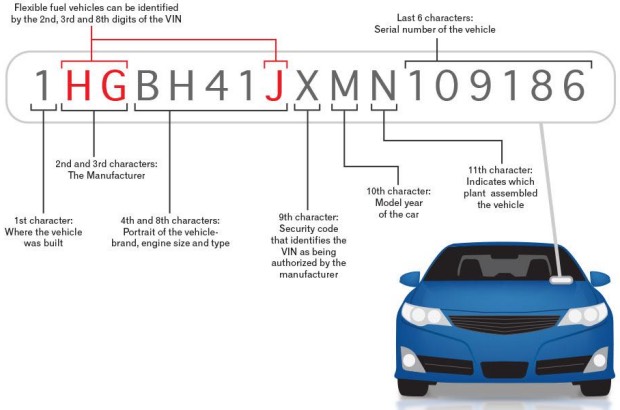How To Check My Car Model

Knowing your car's model is absolutely crucial, whether you're ordering parts, diagnosing a problem, or simply trying to understand its specific engineering. This isn't just about knowing the make and year; it's about pinpointing the exact variant, engine type, and trim level. This article will guide you through several methods to accurately identify your car model, equipping you with the knowledge needed for successful DIY repairs, modifications, and confident part ordering.
Why Accuracy Matters: The Purpose of Model Identification
Think of your car as a complex recipe. Using the wrong ingredients (parts) leads to disaster. Identifying your exact model is the first step in ensuring compatibility. Here's why this knowledge is essential:
- Parts Compatibility: Different models, even within the same year, can use different parts. Brakes, filters, engine components – all can vary significantly.
- Repair Procedures: Service manuals and repair guides are specific to certain models. Using the wrong procedure can damage your car.
- Modification and Tuning: Modifying your car safely and effectively requires knowing its exact specifications. Engine tuning, suspension upgrades, and body modifications all depend on the correct model information.
- Insurance and Registration: Accurate model information is needed for insurance policies, registration, and vehicle history reports.
- Resale Value: Precisely identifying your car's trim level and options can significantly impact its resale value.
Key Specifications and Identification Methods
Several places hold the key to unlocking your car's identity. We'll explore the most reliable options:
1. Vehicle Identification Number (VIN)
The VIN is a 17-character alphanumeric code unique to your vehicle. It's like your car's fingerprint. It contains information about the manufacturer, model, engine, and more. Think of it as the Rosetta Stone of automotive identification.
Location:
- Dashboard: Usually located on the driver's side dashboard, visible through the windshield.
- Door Jamb: Often found on a sticker on the driver's side door jamb.
- Registration and Insurance Documents: Printed on your vehicle registration and insurance card.
- Engine Bay: Stamped on the firewall (the metal panel separating the engine compartment from the passenger compartment).
Decoding the VIN: Numerous online VIN decoders are available. These tools translate the VIN into specific details about your car. For example, the 10th character usually indicates the model year. The 11th character typically identifies the assembly plant.
Important Note: Always use a reputable VIN decoder. Some free decoders may not be accurate or may contain malicious software.
2. Vehicle Placard/Sticker
Many vehicles have a sticker or placard, often located on the driver's side door jamb, that provides vital information. This sticker can include the VIN, the Gross Vehicle Weight Rating (GVWR), tire pressure recommendations, and sometimes the specific model designation.
3. Owner's Manual
Your owner's manual is a goldmine of information about your car, including the specific model and trim level. It may also list specific engine codes or other identifying features.
4. Engine Code
The engine code is a specific alphanumeric identifier stamped directly onto the engine block. This code precisely identifies the engine type, displacement, and other critical characteristics. This is extremely important for ordering the correct engine parts. Locating the engine code can be tricky, but it's usually found on a flat surface on the engine block. Consulting a repair manual or online forums specific to your car's make and model can help you locate it.
5. Specific Features and Options
Sometimes, identifying your car model comes down to recognizing specific features and options. For example:
- Trim Level Badges: Many manufacturers use badges to indicate the trim level (e.g., "LX," "EX," "Sport").
- Wheel Styles: Different models often have unique wheel styles.
- Interior Features: The presence of leather seats, a sunroof, or a specific audio system can indicate a particular trim level.
Real-World Use: Basic Troubleshooting Tips
Let's say your car is misfiring, and you suspect it's a faulty ignition coil. Before ordering a replacement, you need to identify your engine type. Here's how you might proceed:
- Locate the VIN: Find the VIN on the dashboard or door jamb.
- Use a VIN Decoder: Enter the VIN into a reputable online VIN decoder.
- Identify Engine Type: The VIN decoder should provide your engine type (e.g., "2.0L DOHC 16V").
- Confirm Engine Code: Locate the engine code on the engine block to double-check the VIN decoder's information.
- Order the Correct Part: Use the confirmed engine type to order the correct ignition coil.
Scenario 2: You want to upgrade your car's suspension. Knowing the exact model and trim level allows you to choose suspension components that are specifically designed for your vehicle, ensuring proper fit and performance.
Safety Considerations
While identifying your car model is generally safe, be cautious when working around the engine bay. Always disconnect the negative battery terminal before working on any electrical components. Be aware of hot surfaces and moving parts. If you're unsure about any procedure, consult a qualified mechanic. Remember that some components, such as the fuel system and airbags, are extremely dangerous and should only be handled by trained professionals.
We Have the File: Download the Repair Diagram!
We understand the importance of having access to detailed information. We have a comprehensive repair diagram specific to your [Replace with Car Make] [Replace with Car Model] readily available. This diagram will provide you with detailed schematics, parts breakdowns, and troubleshooting steps.
To access the diagram, [Provide instructions on how to access the download, e.g., "click the link below," "contact us with your VIN," etc.]. This resource will be invaluable in your DIY endeavors.
Accurately identifying your car model is a fundamental skill for any DIY enthusiast or experienced mechanic. By mastering the techniques outlined in this article, you'll be well-equipped to tackle repairs, modifications, and maintenance tasks with confidence.
